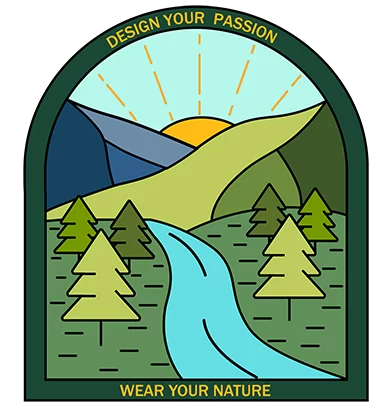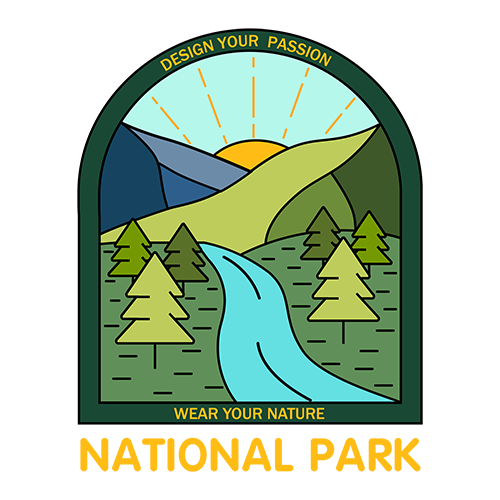Have you ever dreamt of waking up to the sight of a majestic bison grazing just outside your window, or catching a glimpse of a wolf howling under a star-studded sky? My travels have taken me to some incredible places, but nothing quite compares to the raw, untamed beauty of Yellowstone National Park. This incredible landscape is a haven for wildlife, if you’re planning a visit, you’re in for a treat!
Get ready to discover a new world of creatures with my comprehensive guide to Yellowstone National Park animals. In this article, I’ll share my experiences and insights on the diverse wildlife you can expect to encounter, helping you plan the perfect wildlife-watching adventure. Come explore with me and nationalparkshops.com!
>> Read More: How Many Days Need For Yellowstone National Park
Top Animals live in Yellowstone National Park
Yellowstone National Park is a true haven for wildlife enthusiasts, boasting a diverse array of animal species that call this vast wilderness home. From majestic predators to iconic herbivores, Yellowstone’s fauna is a testament to the park’s ecological richness and the importance of conservation efforts. Let’s explore some of the most fascinating Yellowstone National Park animals that roam stunning landscapes.
Bears
Yellowstone is home to both grizzly and black bears. The distinction between the two is easy to notice; grizzly bears are bigger and possess a unique muscular hump on their shoulders for digging. They also have rounded ears and faces that are more dish-shaped.
On the other hand, black bears feature a longer nose, a straighter forehead-to-nose line, and more pointed ears.
Grizzly bears are mainly located in the Hayden and Lamar Valleys as well as at Mt. Washburn, while black bears are found more often in the Tower and Mammoth regions. Bears have curved claws that enable them to climb trees and they excel in swimming. These Yellowstone National Park animals are strong and can pose a threat if they feel cornered, particularly if they are accompanied by cubs.

American Bison
American bison often referred to as buffalo, are the largest grazing mammals found in Yellowstone National Park animals. They are strict herbivores, which means they are specialized in feeding on the grasses and sedges that grow in meadows, foothills, and wooded plateaus.
Mature male bison, known as bulls, can weigh as much as 1,800 pounds, while females, or cows, typically weigh around 1,300 pounds. Both genders reach a height of about six feet at the shoulder and can run surprisingly fast when they feel threatened or are approached.
Bison mate between mid-July and mid-August and usually give birth to one calf during April and May. In the wild, their average lifespan ranges from 20 to 25 years. Bison are migratory grazers, moving up to Yellowstone’s grassy plateaus in the summer. In winter, they use their large heads to clear snow and access food beneath it.
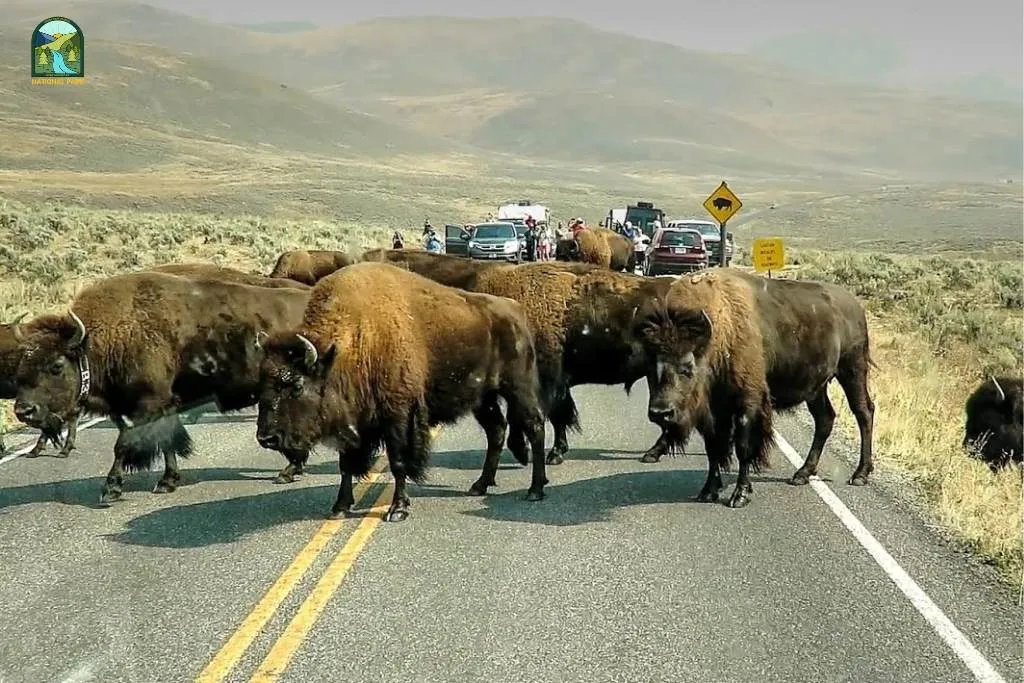
>> Read More: 10 Best Hikes and Trails in Yellowstone National Park
Wolves
Wolves are very social creatures that exist in groups and communicate using barks, whines, growls, and howls. They usually move in groups of around ten and take care of their young until the pups are able to hunt independently, which generally happens at about 10 months of age.
Yellowstone has nearly 100 wolves, with the largest packs being Slough Creek, Yellowstone Delta, and Leopold. Wolves are originally from Yellowstone and were brought back to the park in 1995.
Their primary prey is elk, but they have had to adapt to hunting bison because of their larger size. Wolves in Yellowstone typically live up to 10 years in the wild, though their average lifespan is between 6 and 8 years.
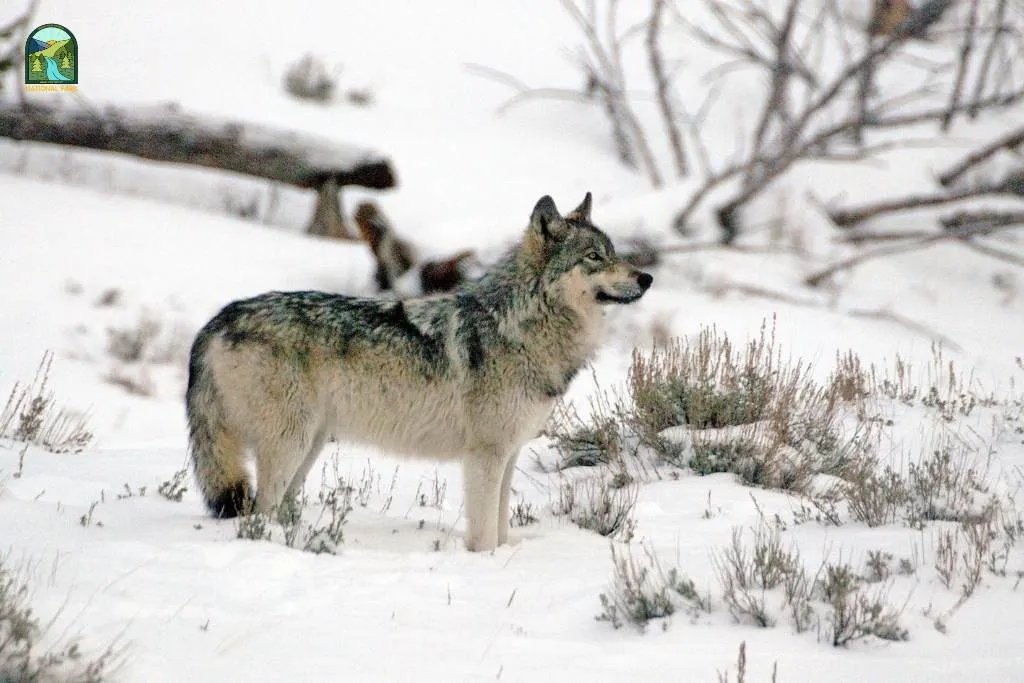
Bighorn Sheep
Bighorn sheep (Ovis canadensis) are sizable, hoofed mammals primarily located in small, isolated groups throughout the Rocky Mountains. They derive their name from the prominent, curved horns of the males, which can weigh as much as 30 pounds.
These Yellowstone National Park animals are social and form herds. During the fall, males engage in head-butting contests to win over females. Lambs, or baby bighorn sheep, are capable of walking and climbing shortly after birth.
Historically, bighorn sheep were a vital food resource for humans, but their populations have declined due to hunting and diseases. In the wild, they generally have a lifespan of 10 to 15 years.
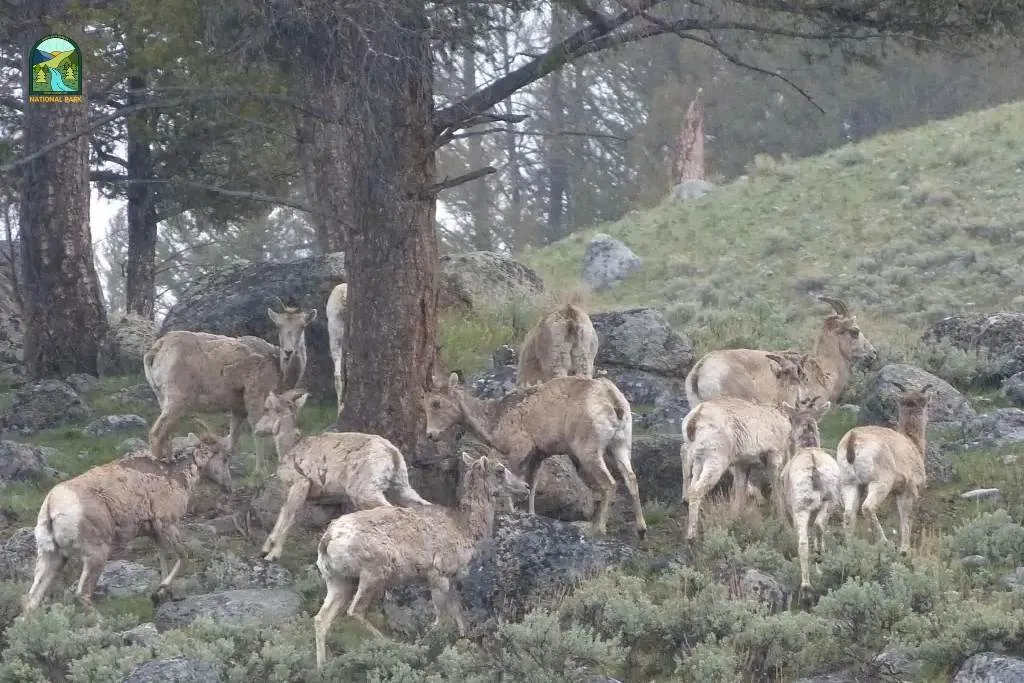
Coyote
Coyotes (Canis latrans) are smart and nimble creatures that are plentiful in Yellowstone National Park. They usually weigh about 30 pounds and can live for as long as six years. These Yellowstone National Park animals are very vocal, with their calls most commonly heard during twilight hours. They inhabit areas such as grasslands, meadows, and fields.
As opportunistic hunters, coyotes primarily target small mammals like rodents, but they can also take down larger prey when working in groups. In Yellowstone, the return of wolves has led to a decline in coyote numbers due to competition with these bigger canids.
Coyotes can become accustomed to the presence of humans and scavenging food, which poses potential risks for both themselves and people.
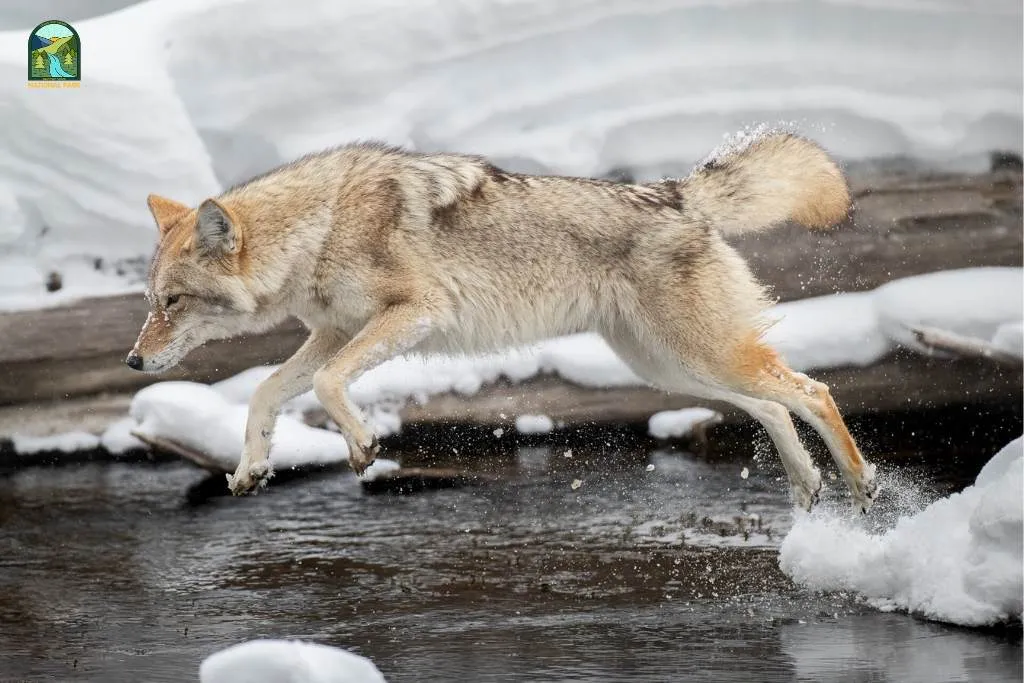
Elk
Elk, also known as wapiti (Cervus canadensis), are the most prevalent large mammals in Yellowstone and have inhabited the area for at least a millennium. These Yellowstone National Park animals rank as the second-largest species in the Cervidae family, closely related to deer and moose (with moose being the largest), and feature a reddish-brown coat complemented by a thick, darker mane and a noticeable yellowish patch on their rumps.
Adult males, referred to as bulls, can exceed 700 pounds in weight, while females, known as cows, typically weigh between 500 and 525 pounds. Bulls begin growing antlers around their first year, which can have 6 to 8 tines on each side and may weigh over 30 pounds.
During the rut or fall mating season, bulls often assemble harems of 20-30 cows and engage in antler clashes with other mature males to assert dominance over the group.
Calves, which weigh between 25 and 40 pounds, are generally born in late May or early June. In the wild, elk typically live for about 15 years, shedding their antlers in March or April and starting the regrowth process in May.
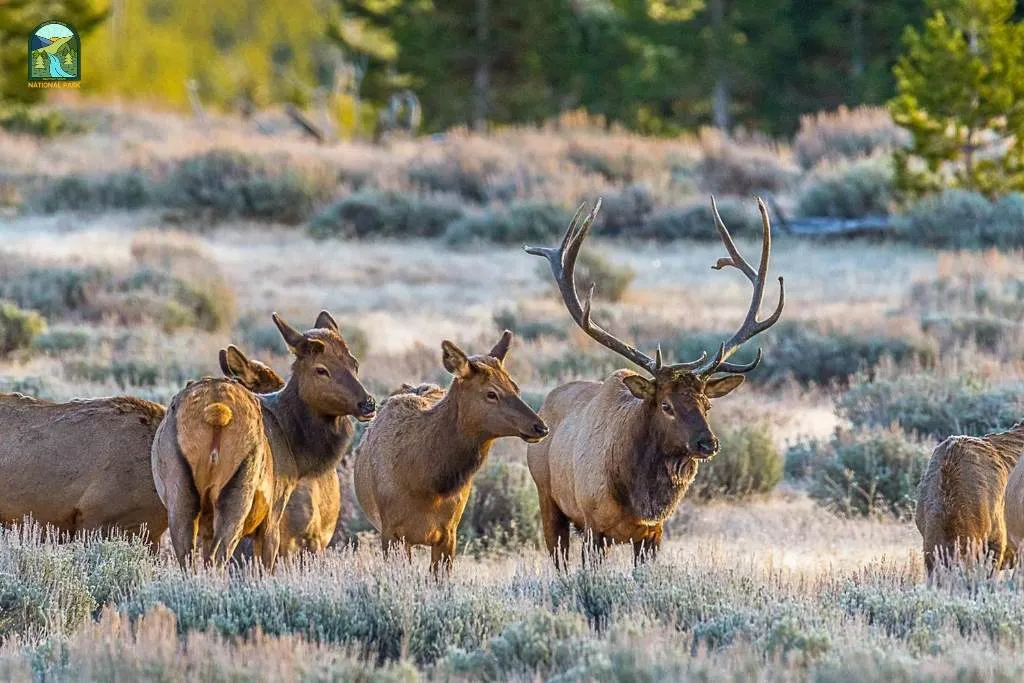
Beaver
The beaver is a critical species that significantly contributes to habitat creation and maintenance. These Yellowstone National Park animals are primarily active during dawn and dusk, consuming willow, aspen, cottonwood, or aquatic plants such as pond lilies when those trees are not available.
Beavers reside in social units called colonies, a behavior that is rare among mammals. They build their homes and dams using wood and prefer locations close to rivers and streams.
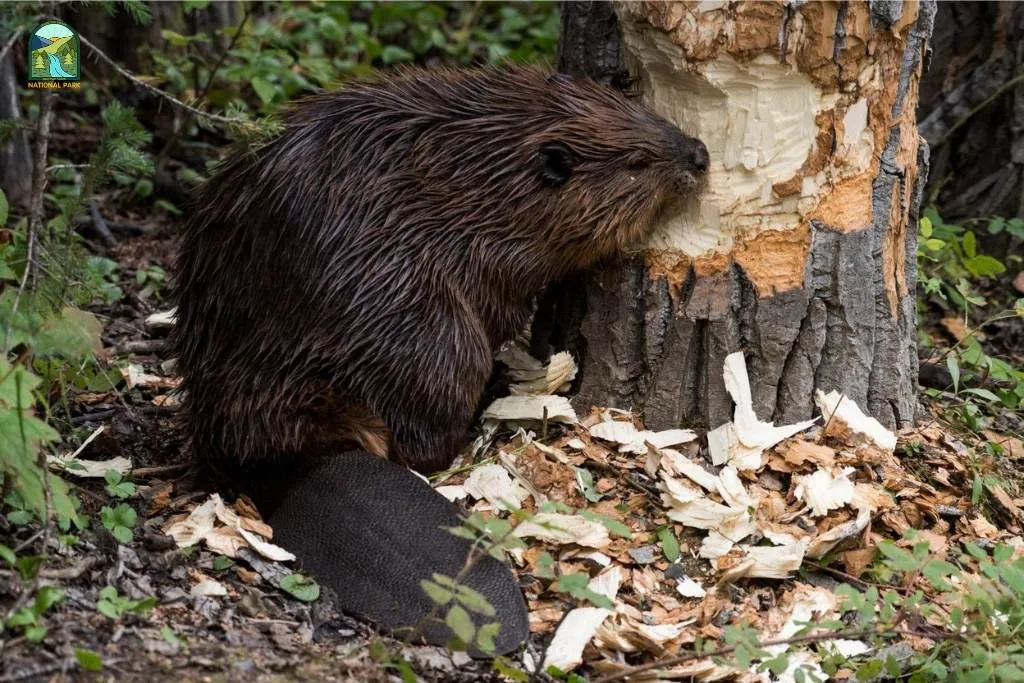
Deer
The deer family includes both mule deer and white-tailed deer. These Yellowstone National Park animals characteristics, such as hooves and antlers, vary by species and gender, with a typical lifespan of 10 to 15 years in their natural habitat.
Mule deer are prevalent in Yellowstone and inhabit forests, grasslands, and shrub areas. White-tailed deer are primarily found in the central and northern Great Plains, as well as in mixed deciduous riparian zones, river valley bottomlands, and lower foothills of the northern Rocky Mountains extending from Wyoming to southeastern British Columbia.
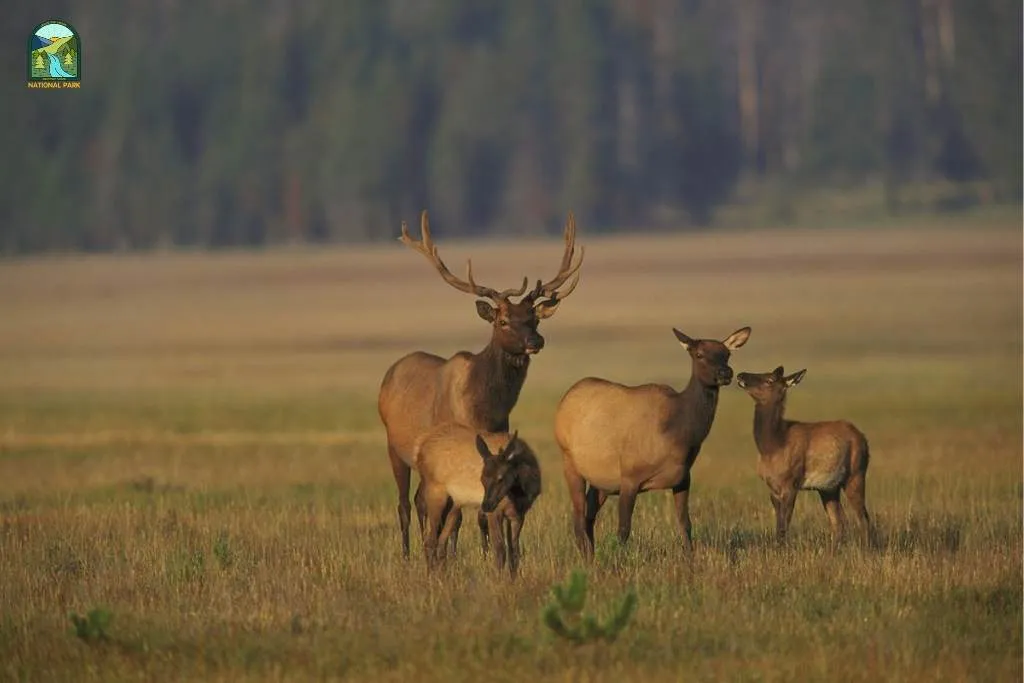
Birds of Yellowstone National Park
When it comes to Yellowstone National Park Animals, we definitely have to talk about Birds. Yellowstone is a birdwatcher’s paradise, with over 300 species of birds recorded within the park’s boundaries. From majestic raptors to colorful songbirds, Yellowstone’s avian residents are a delight to observe and study.
>> Read More: Yellowstone National Park Weather
Bald Eagles
Bald eagles are present in the Hayden Valley, Madison River regions, and Yellowstone Lake during the summer season. These Yellowstone National Park animals exhibit gray and rusty brown plumage, along with a unique red spot on their forehead. As the tallest birds in the park, they reach a height of about 4 feet. They are often spotted searching for food in open grassy areas.
These eagles arrive in Yellowstone during spring and depart in the fall. They are not selective about their diet, consuming fish, small birds, rodents, and even carrion. They construct large nests from sticks either in trees or on high cliffs near water, laying two to three eggs between May and June. The chicks have a mottled look due to lighter edges on their dark feathers covering their backs and upper wings.
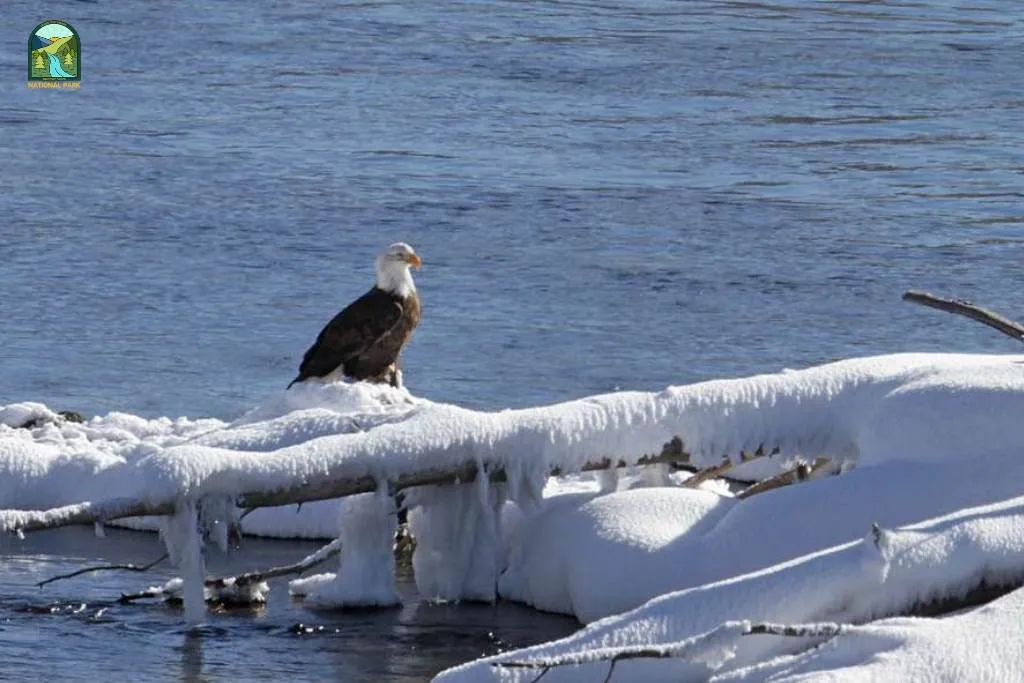
Osprey
Ospreys migrate to Yellowstone in the spring to catch fish and build their nests. They construct stick nests in trees or high places near water and usually lay two to three eggs in May or June. After a few weeks, the eggs hatch, and the young ospreys, known as fledglings, have light edges on their dark feathers, making them look speckled.
During the summer and fall, these Yellowstone National Park animals learn to fly and hunt independently. As autumn approaches, ospreys start their migration south to warmer areas. In the spring, they return to Yellowstone to repeat the process.
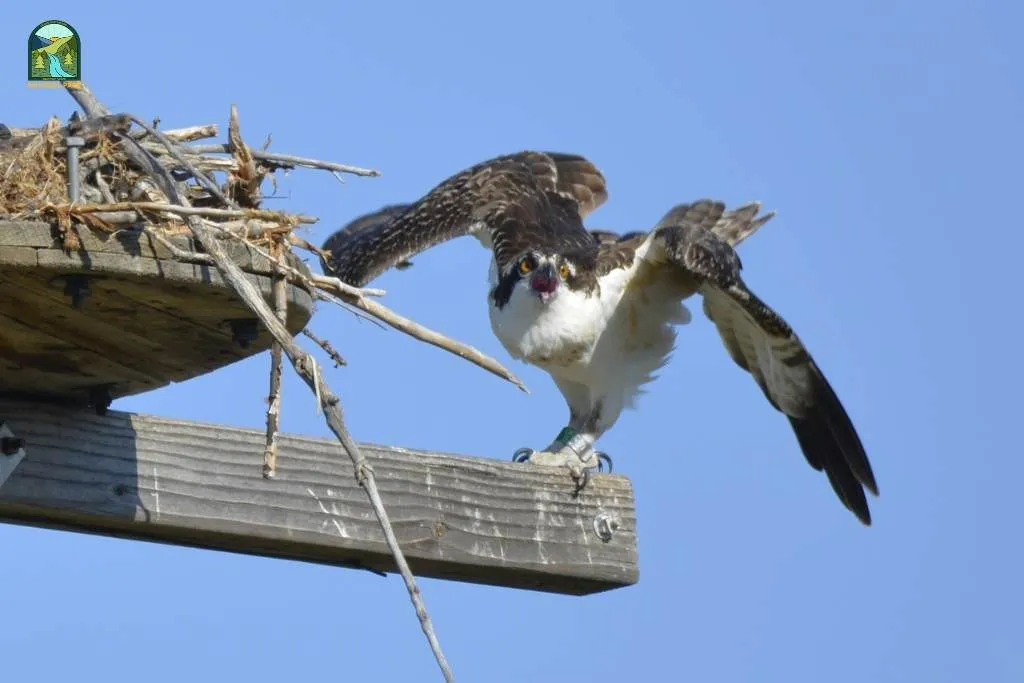
Mountain Chickadees
Mountain chickadees are frequently found in songbirds in the mountainous regions of western North America, extending from southern Arizona and New Mexico to the Yukon in Canada. They use a variety of calls to communicate, including the well-known “chick-a-dee, dee, dee.” These resilient birds can endure the winters in Yellowstone by storing or hiding food for later consumption. These Yellowstone National Park animals are small in size, featuring feathers that are brown, grey, and white.
During the summer months, their sweet, trilling songs can often be heard. They tend to be very social, frequently gathering in flocks with other small birds. In winter, they become less active in response to human presence but continue to use their unique calling. They have an omnivorous diet, consuming plants, insects, and small fruits. Their strong wings enable them to make swift flights between trees.
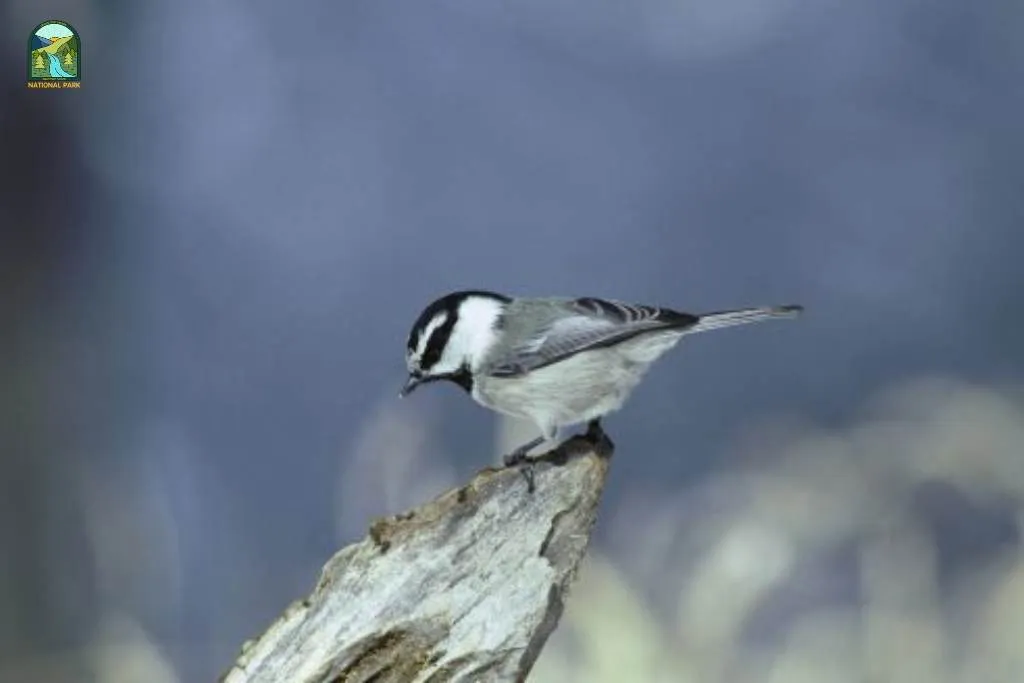
Sandhill Cranes
The sandhill crane is a sizable bird that reaches a height of around 4 feet, featuring gray and rusty brown plumage along with a notable red spot on its forehead. They produce a unique, guttural sound and are frequently spotted searching for food in open grasslands.
During the summer, they inhabit Yellowstone National Park, where they breed and can be observed in significant numbers. These Yellowstone National Park animals are skilled foragers, mainly feeding on small insects, amphibians, and vegetation. Their extensive wingspan enables them to migrate over long distances, typically traveling in pairs. Additionally, they are sociable creatures and can sometimes be seen in large groups consisting of hundreds of birds.
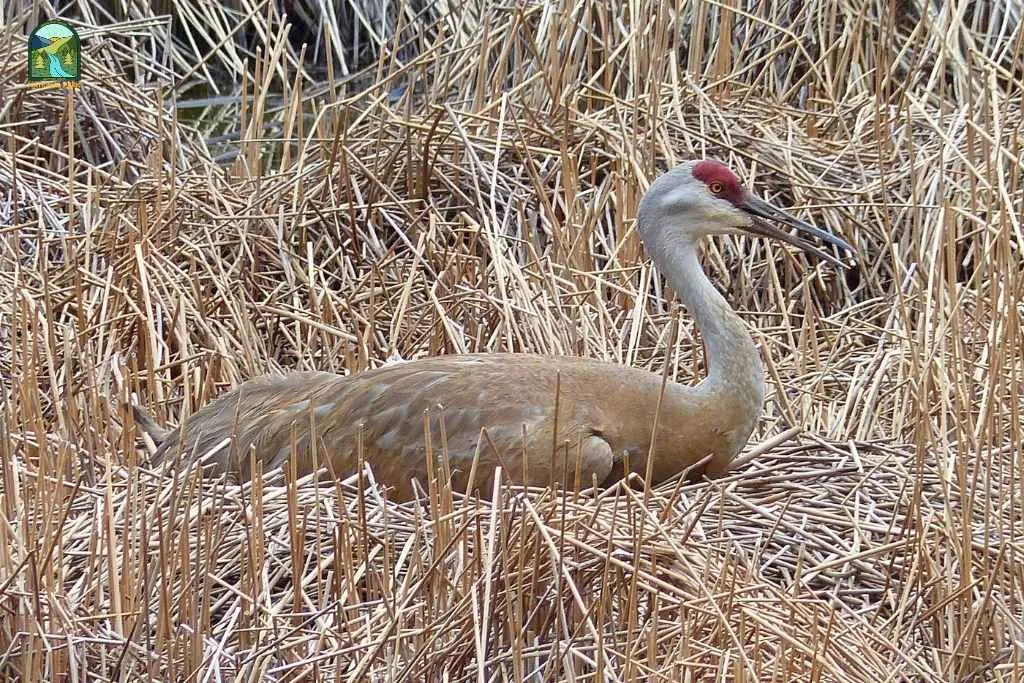
Where to see animals in Yellowstone National Park?
After learning all about Yellowstone National Park animals, I will guide you to the places where you can observe animals in the best way. Each area of the park offers its own unique array of species.
>> Read More: Yellowstone National Park Camping
Hayden Valley
A wildlife tour in Hayden Valley offers a diverse array of animal sightings, such as bison, elk, deer, bears, wolves, bald eagles, trumpeter swans, sandhill cranes, moose, and more. The large herds of bison and elk often feed in the valley, while pronghorn leap through the wet grasslands. Moose can sometimes be spotted in riparian zones, and black and grizzly bears frequently appear in the region. Wolves also inhabit Hayden Valley, making it an excellent location to observe these fascinating predators.
Hayden Valley is located about 1 hour and 30 minutes from West Yellowstone, and it’s recommended that visitors arrive early in the morning or late in the evening to increase their chances of animal sightings. Additionally, the nearby Fishing Bridge serves as a wonderful place for picnicking and bird watching. Visitors can look forward to an unforgettable Yellowstone National Park animals experience amidst the stunning landscape of Yellowstone National Park.
>> Read More: Yellowstone National Park Fishing
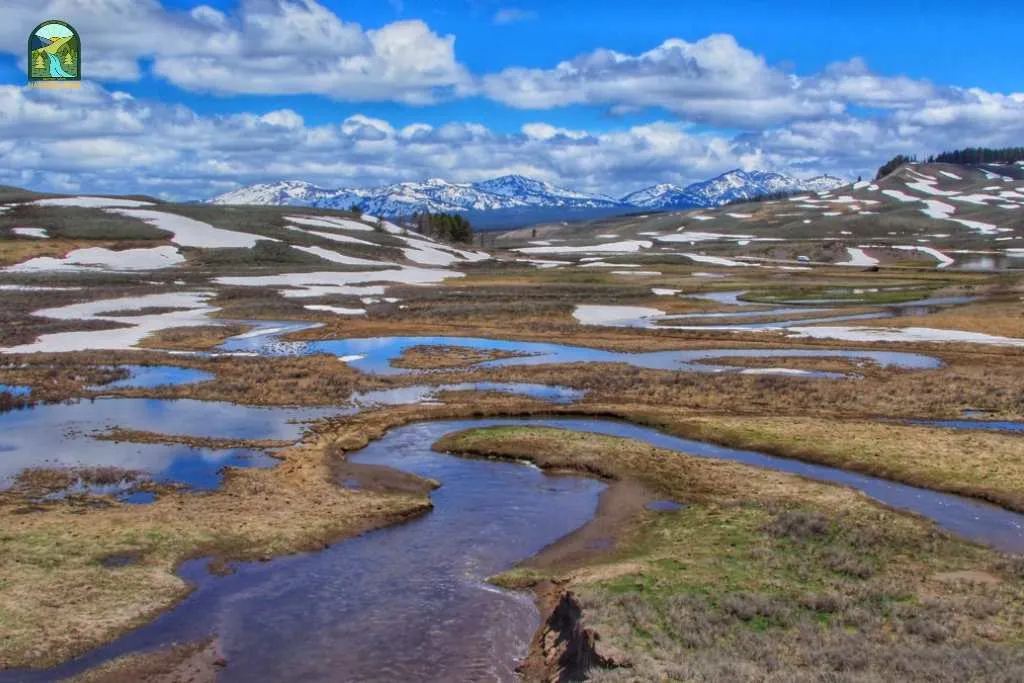
Lamar Valley
Lamar Valley is a stunning wildlife haven situated in the northeastern part of Yellowstone National Park, approximately two hours from West Yellowstone. It is famous for being one of the premier locations globally to observe Yellowstone National Park animals iconic mammals, which has led to its nickname “America’s Serengeti” due to the large variety of megafauna it hosts.
With over 15 species of wildlife present, Lamar Valley is particularly noted for its significant populations of bison, elk, and pronghorn, as well as black and grizzly bears, along with various predators including wolves, coyotes, red foxes, mountain lions, and bobcats.
Additionally, the valley is open throughout the year and offers stunning views of its grasslands and temporary pools. These factors contribute to Lamar Valley’s popularity as a destination for wildlife tours in Yellowstone.

The Tower-Roosevelt Area
The Tower-Roosevelt section of Yellowstone National Park is located in the park’s northeastern corner, about a 60-minute drive from West Yellowstone, and is close to Lamar Valley. This region is noted for its dramatic cliffs, unique rock formations, and steep columnar basalt cliffs, creating an ideal environment for agile mammals like bighorn sheep and deer.
Additionally, birdwatchers will enjoy this area as it hosts various birds of prey, including ospreys, falcons, and hawks. Other Yellowstone National Park animals to observe include black bears, grizzly bears, wolves, bison, elk, and more.
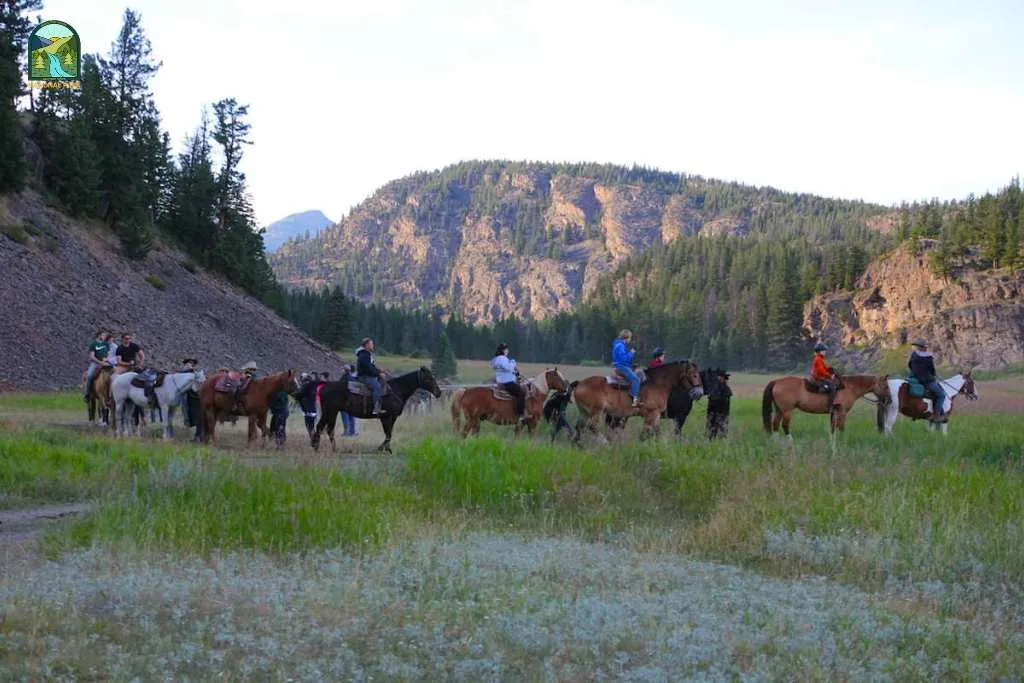
Geyser Basins
The geyser basins in Yellowstone National Park are a must-see due to their distinctive geothermal characteristics and the wildlife viewing possibilities they offer. The park features around 10,000 geothermal elements concentrated in five primary geyser basins: Mammoth Hot Springs, West Thumb Geyser Basin, Midway Geyser Basin, Norris Geyser Basin, and Upper Geyser Basin.
The hydrothermal areas near Old Faithful are especially significant as they provide winter habitats for bison and elk during the frigid months. Visitors at Old Faithful can also observe osprey and, during springtime, black and grizzly bears. Other noteworthy geyser basins include Biscuit Basin, Boiling River Hot Springs, and the Grand Canyon of Yellowstone, each showcasing remarkable geology and opportunities for seeing Yellowstone National Park animals.
>> Read More: Yellowstone National Park Hot Springs
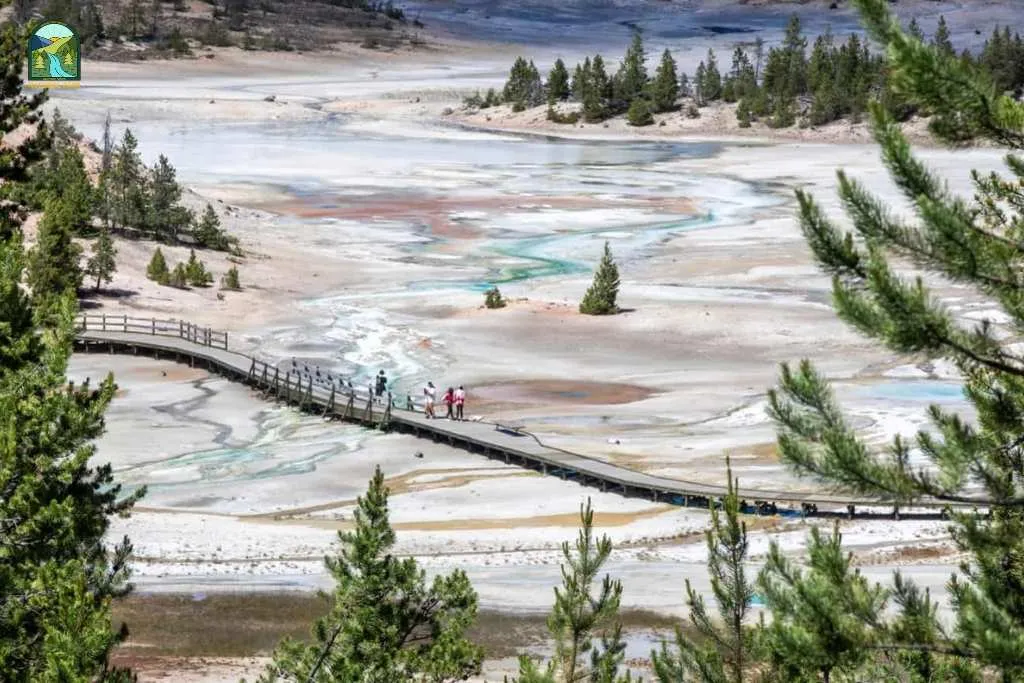
FAQs about Yellowstone National Park Animals
What is the rarest animal in Yellowstone National Park?
The wolverine (Gulo gulo) is considered one of the rarest animals in Yellowstone National Park. These elusive members of the weasel family are found in remote, high-elevation areas of the park and are rarely seen by visitors.
What are the top predators in Yellowstone?
The top predators in Yellowstone are the grizzly bear, the gray wolf, and the mountain lion. These animals play a crucial role in regulating the populations of their prey and maintaining the overall health of the ecosystem.
What animal attacks are most dangerous in Yellowstone National Park?
While attacks by wildlife in Yellowstone are rare, the most dangerous animals in the park are the grizzly bear and the bison. Grizzly bears are known to be aggressive when they feel provoked or threatened, while bison, though they may look docile, can be extremely dangerous if provoked.
In recent years, there have been several high-profile incidents involving animal attacks in Yellowstone. To prevent these types of attacks, the park has taken measures to educate visitors on how to stay safe around wildlife. This includes providing information on the types of animals in the park and their behavior, as well as giving advice on how to react if you encounter them. Visitors are advised to stay at least 300 feet away from bears and wolves and 25 yards away from bison and elk.
>> Read More: What State Is Yellowstone National Park In: Located on Map
Conclusion
I’m left with a profound sense of awe and appreciation for the incredible diversity of Yellowstone National Park animals. From the smallest chipmunk to the mightiest grizzly bear, each creature plays a vital role in this magnificent ecosystem. My encounters with these remarkable animals have reminded me of the importance of conservation and the need to protect these natural habitats for generations to come.
Whether you’re planning your first visit or returning for another adventure, I hope this list has inspired you to keep your eyes peeled and your camera ready for the amazing wildlife that awaits you in Yellowstone. Trust me, there’s nothing quite like witnessing these animals in their natural habitat – it’s an experience that will stay with you long after you’ve left the park. So pack your binoculars, bring your sense of wonder, and prepare for unforgettable wildlife encounters in one of the most breathtaking places on Earth. Happy animal spotting, fellow adventurers!
Read More:
